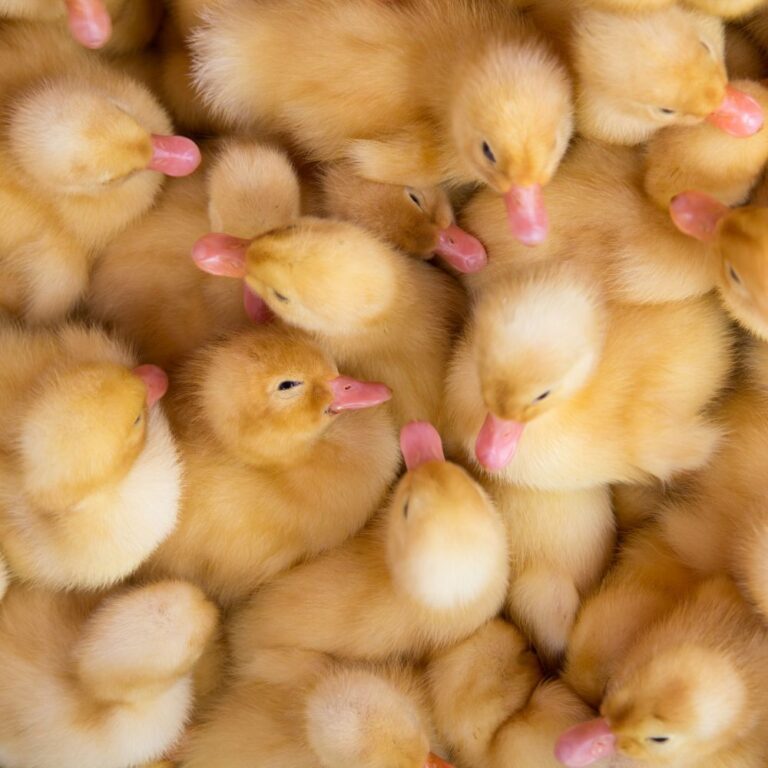Sometimes, I lay awake at night and think about how great my flock would look with all kinds of different duck breeds.
(Well, maybe not really all night. I do like to sleep.)
Ducks are lovely creatures that make great pets – and they lay eggs! Lots of eggs (sometimes, more consistently than chickens).
From wonderful egg layers like the Ancona and Silver Appleyard, to beautiful heavy breeds like the Rouen and Aylesbury, ducks are great to have in any backyard or farm.
However, there’s so many options, it can be hard to know which duck breeds are best for you!
In this article, we’ll discuss everything you need to know about ducks, from baby duck breeds or miniature duck breeds, and to mixing duck breeds in order to find a combination that’ll fit your needs.
Table of Contents (Quickly Jump To Information)
List of Pet Domestic Duck Breeds
- American Pekin
- Ancona
- Appleyard
- Call Duck
- Cayuga
- Crested Duck
- Indian Runner Duck
- Khaki Campbell
- Muscovy
- Magpie
- Mallard
- Orpington
- Rouen
- Saxony
- Swedish
- Welsh Harlequin
Duck Breeds
American Pekin
This large duck breed has been domesticated for over 2000 years! They’re one of the most popular duck breeds, and are instantly recognizable because they’re white! This friendly duck has an orange beak and legs, and is an excellent producer of large, white eggs. They’re generally healthy (although you need to give them Brewer’s Yeast as ducklings so they grow healthy bones). American Pekin ducks are good-natured and make for excellent pets.
They’re both heat and cold hardy, and are one of the heavier breeds, weighing at about 9 pounds.
How many eggs do Pekin ducks lay?
On average, Pekin hens lay about 200 very large white colored eggs per year (this will depend on diet – you can learn what ducks eat here).
Ancona
This dual-purpose duck is beautiful and friendly….and lays GREEN eggs! They’re also excellent foragers, and will keep your gardens free of slugs and other pain in the butt garden pests. Originating in England, they’re a relatively new breed (developed in the earthy 20th century) and are said to descend from Runner ducks. They’re great producers of eggs, and can lay green, blue, white, or cream eggs. They’re friendly, and make excellent pets if you feed them lots of treats.
Appleyard
Named after their breeder, Reginald Appleyard, this is a pretty new duck breed, but growing in popularity rapidly. They’re one of the “champion egg layers” of the backyard duck world, producing about 250 white eggs per year. They’re heavy, weighing in at around 9 pounds for the drakes, and are excellent foragers. You can find Appleyards at most big hatcheries. You can learn more about this duck breed here.
Call Duck
These are smaller ducks (kind of like bantam chickens) that are mostly kept as companions. They have smaller bills and were originally used as decoys by hunters to attract wild ducks. Because of their size and adorable appearance, they make great pets, and enjoy human company. The drakes weigh about 1.5 pounds, with the hens weighing about 1 pound (so, pretty small). Their egg colors can range from green to white to cream.
Because of their size, they’re even more susceptible to predators, so make sure their duck house is safe.
Cayuga
Although it’s not clear how this duck breed developed, one thing is for sure: Cayuga ducks are very distinct! Their unique name derives from the indigenous people who occupied modern day Upstate New York before the European invasion.
They’re solid black (although their feathers have a green sheen to them, especially the drakes). They’re friendly and are excellent foragers. The hens lay eggs in shades of light grey to a dark, charcoal grey (sometimes even black). As the season progresses, the eggs get lighter and lighter. The males weigh about 7 pounds, and the females about 5 pounds.
Crested Duck
Crested ducks are great pet breeds (especially for children) because they’re friendly and look like something straight out of a Dr. Seuss book! The crest on their head is actually a genetic abnormality. They seem to be an ancient breed, and there’s some 2000 year old images showing a duck with a crest of feathers. Weighing in at around 7 pounds, they’re also fairly large.
They’re excellent layers of about 200 eggs per year. There’s also a bantam version of this duck breed. The crest is caused by a lethal allele, and when both parents carry the crested genetics, 25% of the clutch won’t hatch (similar to araucanas and their lethal genetics). So, it’s best to breed a crested duck to a non-crested duck to ensure the best possible hatch rate (50% of the ducklings will be crested). You can read more about hatching eggs here.
Indian Runner Duck
This duck breed is very distinctive, with their nearly vertical build. They also don’t waddle, instead, they’re built to run (hence their name “runner duck.) They’re excellent layers of about 300 eggs per year, and are great for pest control. Originating from the East Indies, they’re quiet ducks that prefer to forage. They’re also on the small side, with drakes weighing about 5 pounds. Their duck eggs are green or blue (or shades in between).
Indian Runner duck colors include:
- White
- Penciled
- Buff
- Black
- Chocolate
- Blue
- Grey
- Fawn & White
Khaki Campbell
Khaki Campbells are a popular duck breed that lays large, white eggs consistently (about 200 per year). They’re brown, and it’s easy to tell the drakes from the hens. They’re friendly if hand raised, and fed lots of treats. However, they’re susceptible to predators, especially since they tend to be on the small side. They also tend to “go broody” (want to hatch eggs) more than other breeds. You can easily find this breed at most big hatcheries.
Muscovy
The Muscovy duck breed is a bit of an anomaly in the duck world – they’re the only duck breed not descended from Mallards! The have very distinct appearances, with faces that look covered with bright red warts. Unlike other duck breeds, their eggs take 35 days to hatch (other breeds take 28 days to hatch). They’re also one of the only breeds to perch in trees, and have claws to aid them. They’re large, and lay about 200 off white eggs per year. Some owners say the eggs have a greenish tint, but aren’t exactly green. They love to eat ticks and mosquitoes! You can read more about Muscovy ducks here.
Magpie
This is a funny black and white duck breed that’s becoming more popular as a pet. They’re friendly and distinctive-looking birds, and enjoy human company if offered lots of treats. They’re fairly upright (although not as vertical as Runner ducks) and are excellent layers – about 280 eggs per year.
Mallard
With their green heads and pervasive quacks, mallards are fun a duck breed to raise. While you can find them in the wild, there’s also domestic mallards that hatcheries sell. The males and females look different (unlike Pekins where both are white), with the females having black and tan feathers that remind me of tiger stripes. They’re very beautiful! The females lay about 200 white or greenish white eggs per year.
Orpington Duck
Developed in the town of Orpington in the UK, this breed is less known in the US, but rising in popularity. Their developer, William Cook, also developed the Orpington chicken. Good Ol’ William crossed Rouen, Indian Runner, and Cayugas to create his beautiful Orpington ducks. They’re great producers of large eggs, laying around 200 per year. This duck breed comes in 3 color variations: Buff, Blond, and Brown. The males have a yellow bill, while the females have darker colored bills. While admitted into the American Poultry Standard of Perfection, they don’t necessarily breed true.
Rouen
The Rouen are a duck breed that’s colored like the mallard, but are larger. Originating in France, they’re beautiful birds to look at, and lay prolifically: about 200 white eggs per year. They make great farm ducks, and enjoy human company.
Saxony
Saxony ducks are distinctive looking with their grey heads and wood-colored feathers. Unlike other duck breeds on this list, they were developed in Germany in the 20th century, and are great layers of large, white eggs. They’re large ducks, weighing in at about 9 pounds.
Swedish
This popular breed has white feathers on its chest, and beautiful blue/grey feathers. They were developed in Germany and Northern Poland, and are called “Swedish” because the recognized government was the kingdom of Sweden at the time the breed became known. Blue is the most well known feather color, but other varieties include brown and black. It’s said that Daffy Duck was a Swedish drake – he certainly has the characteristics! They’re great layers of large eggs.
Welsh Harlequin
These are smaller ducks, weighing in at around 5 pounds. Originating in Wales (hence the name Welsh Harlequin) and are derived from Khaki Campbells. Like Mallards, they have green/black heads, and lay prolifically – about 300 white eggs per year.
How Many Varieties Of Ducks Are There?
There’s about 28 types of domestic duck/pet duck breeds in the USA.
What Kind Of Duck Has A Green Head?
Several duck breeds have green heads, including Mallards, Welsh Harlequins, and Rouens. Cayuga drakes also have green heads, although their entire bodies are covered with black feathers that sport a greenish sheen.
What Breed Of Duck Has Yellow Ducklings?
Duck breeds that have yellow ducklings are Pekins and Khaki Campbell ducks. Their ducklings are covered in yellow feathers and have orange beaks and feet.
Keeping Ducks as Pets
What Are The Best Backyard Ducks?
The best backyard duck breeds that lay lots of eggs and are friendly are:
- Khaki Campbell (about 280 eggs/year)
- Magpie (about 280 eggs/year)
- Mallard (about 200 eggs/year)
- Welsh Harlequin (about 280 eggs/year)
- Buff Orpington (about 300 eggs/year)
- Crested (about 200 eggs/year)
- Rouens (about 250 eggs/year)
- Call Ducks (about 300 eggs/year)
Different breeds lay different colored eggs. While most ducks lay white eggs, they can also lay off white, cream tinted, green, blue, or black eggs. Here’s a chart that shows you which breeds lay different colored eggs:
| Breed | Egg Color | Eggs Laid Per Year |
| American Pekin | White | 200 |
| Ancona | Green | 200 |
| Appleyard | White | 250 |
| Black East Indie | Grey, charcoal grey | 200 |
| Call Duck | Green, white, cream | 300 |
| Cayuga | Black, charcoal grey, light grey | 200 |
| Crested Duck | White | 200 |
| Indian Runner Duck | Green, blue | 300 |
| Khaki Campbell | White | 280 |
| Muscovy | Off white, cream, speckled | 200 |
| Magpie | White, bluish green | 280 |
| Mallard | White, greenish white | 200 |
| Orpington | White | 300 |
| Rouen | White | 250 |
| Saxony | White | 200 |
| Swedish | White | 200 |
| Welsh Harlequin | White, blue | 300 |
What Are The Friendliest Duck Breeds?
The top 3 in friendliest duck breeds would have to be the Pekin, Rouen, Khaki Campbell, Swedish, and the Call duck.
Are Ducks Friendly Pets?
Yes! Particularly if you hand raise them and give them lots of treats, they’ll be your best friend. It’s also important to pick breeds that are friendly, such as Call ducks. You can learn about how to raise people friendly poultry here. If you want to give your ducklings treats, you can learn what ducklings eat here.
Can A Duck Be An Indoor Pet?
Yes, but it’ll have to wear a diaper. Ducks, like all birds, don’t have a bladder, so when nature calls, they’ll go anywhere. That being said, ducks are happiest with other ducks, and living in a flock.
What Is The Largest Breed Of Duck?
Pekins. The drakes weigh about 12 – 13 pounds. Traditionally, Pekins were raised as both meat and egg producers, but in modern times, they’re largely kept as layers and pets.
How Long Do Domestic Ducks Live?
The average lifespan of the average domesticated duck is 8 to 10 years, as long as they’re cared for properly. This will vary by breed and individual bird. You can read more about how to raise healthy ducks here and more about how long individual duck breeds live here.
Do Ducks Bite You?
Just like any animal ducks can and will bite when threatened. However, these incidences are few and far between, and ducks don’t generally bite their owners without being provoked and very scared.
Can You Train A Duck?
Yes, with treats, you can train a duck to come when called. If you work with them every day and follow some simple steps (like training them with treats during evening, when they naturally want to come to their house), your ducks will be trained in no time.
Are Ducks Affectionate?
Yes, pet ducks can be very affectionate when they receive the right care.
Will Domestic Ducks Fly Away?
Fear not, as most domesticated duck breeds cannot fly because they’re too heavy compared to their wings. However, some breeds like Mallards have evolved to fly, so you can simply trim their wings.
How Can You Tell If A Duckling Is Male Or Female?
When they hatch, the other sure fire way is to “vent sex” a duck, however, only qualified professionals should attempt this. When they’re about 4 to 6 weeks old, you might notice some ducklings develop a deeper quack, while others retain a high pitched squeak. The lower pitched quack is a sign of a duck hen – their adult voices develop much sooner. As adolescents, a good sign to look for is a curled feather that sticks up near the tail, called a “drake feather,” which indicates the duck is a male.
Which Breeds Are Quiet?
Muscovies are quiet (they don’t quack. Instead, they have a quiet, whispery call that sounds like a hiss). You can learn more about Muscovies here.
Duck Breeds For Eggs
Ducks for White Eggs
Duck breeds that lay white eggs are the Pekin, Buff Orpington, Indian Runner, Swedish, Magpie, and Ancona.
Ducks for Green Eggs
Duck breeds that lay green eggs are the Indian Runner, Call, and Ancona.
Ducks for Blue Eggs
Duck breeds that lay blue eggs are the Indian Runner and Magpie.
Ducks for Black Eggs
Duck breed that lay black eggs is the Cayuga.
Are Duck Eggs Good To Eat?
Yes, duck eggs are good to eat as they are high in fat and rich in omega 3. They’re potentially healthier than chicken eggs, and often, people who have an allergy to chicken eggs can eat duck eggs. You can discover more about duck eggs here.
What Are The Best Laying Ducks?
The best laying ducks are the Campbell, Runner, Buff, Welsh Harlequin, Magpie, and Ancona.
Do Ducks Need Shelter At Night?
Yes, it’s a good idea to give all duck breeds shelter at night to protect them from predators and from inclement weather. You can learn how to build a safe duck pen here.
What Do Ducks Like To Sleep On?
The good thing about ducks is that they don’t roost, so they are fine with sleeping on soft shavings on the coop floor. You can learn about different coop bedding options here.
Which Duck Breeds Are Broody?
The best broody duck breeds are Muscovies and the Welsh Harlequin.
Feeding Backyard Ducks
What Can I Feed My Backyard Ducks?
It’s best to feed your ducks a high quality layer feed specifically formulated for ducks. You can also supplement their diet with oyster shells for additional calcium. As for treats, you can feed your backyard ducks insects, worms, weeds/grass, fish, eggs, berries, cracked corn, or sunflower seeds. For a full list, you can learn more about what to feed ducks here.
Some veggies and leafy greens that ducks love are:
- Cut grass (that hasn’t been sprayed with any chemicals)
- Kale
- Swiss chard
- Radish & turnip greens
- Lettuces & other salad greens
Some high-protein treats you can feed ducks are:
- Mealworms
- Crickets
- Eggs (cooked only you can boil and dice – leave the shells off, Too much calcium can cause problems with young poultry)
- Dried shrimps
- Black soldier fly larvae
- Superworms (extra large mealworms)
- Darkling beetles
Remember: Ducks aren’t chickens – they have round bills that don’t pick food up easily like sharp beaks. So, it’s best to float treats on water so your ducks can easily dig them up.
Which duck breeds do you raise? Please a comment below!
Maat van Uitert is a backyard chicken and sustainable living expert. She is also the author of Chickens: Naturally Raising A Sustainable Flock, which was a best seller in it’s Amazon category. Maat has been featured on NBC, CBS, AOL Finance, Community Chickens, the Huffington Post, Chickens magazine, Backyard Poultry, and Countryside Magazine. She lives on her farm in Southeast Missouri with her husband, two children, and about a million chickens and ducks. You can follow Maat on Facebook here and Instagram here.

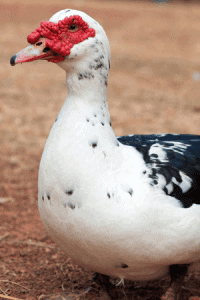
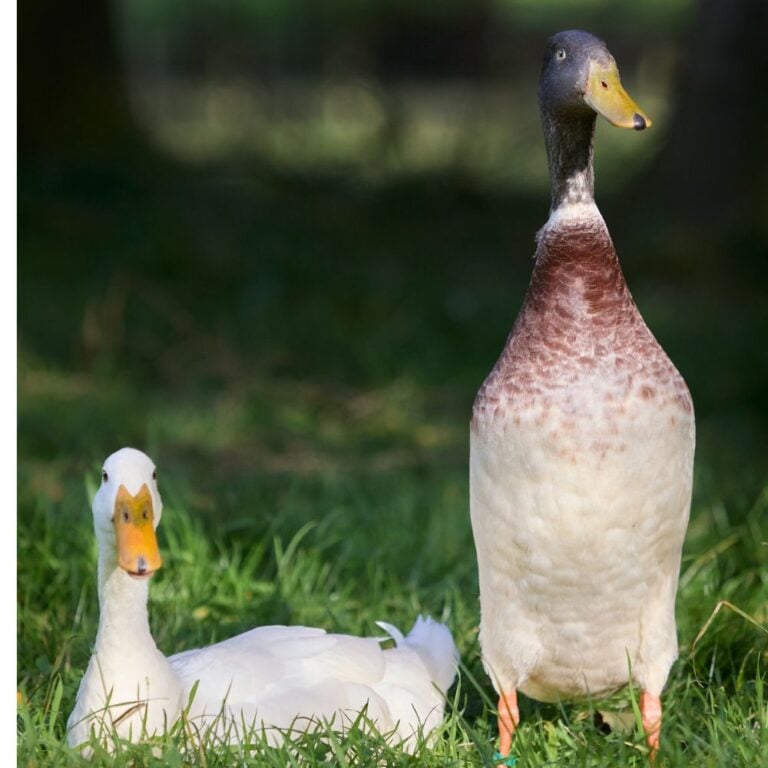
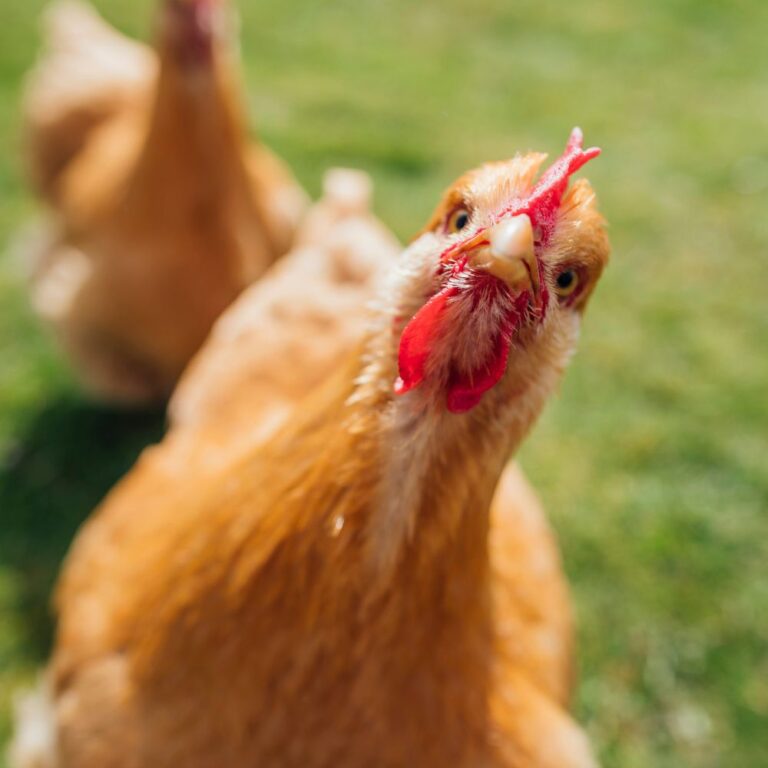
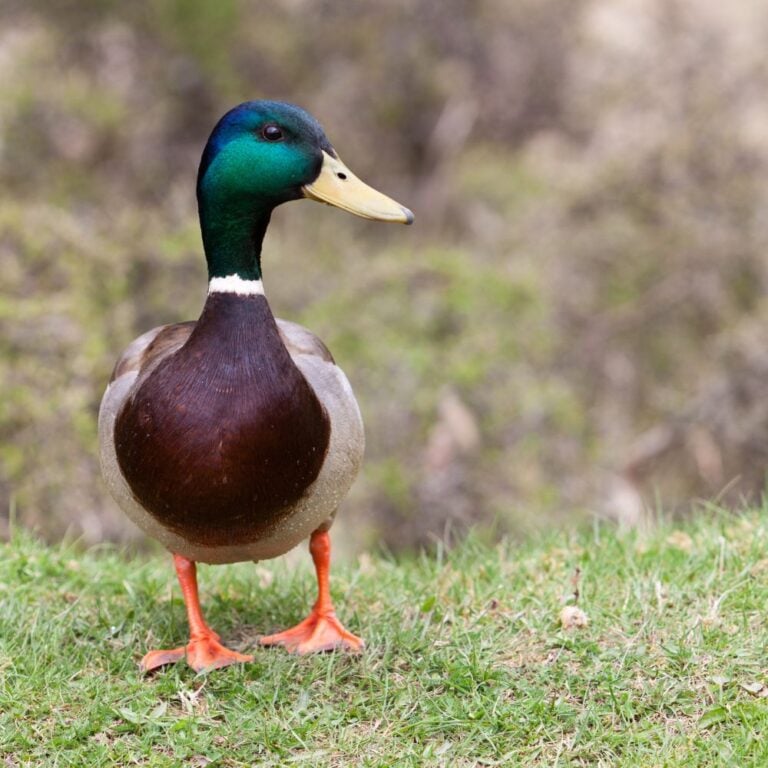
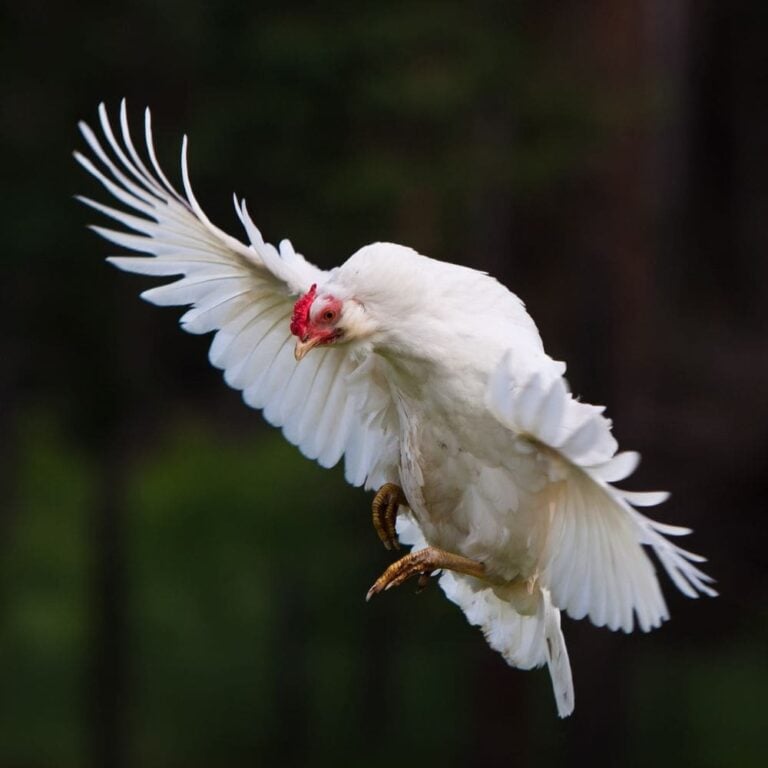
![The Big Chill: How To Keep Your Hens Hydrated Over Winter [Podcast]](https://thefrugalchicken.com/wp-content/uploads/2016/11/keeping-hens-hydrated-over-winter-min.jpg)
